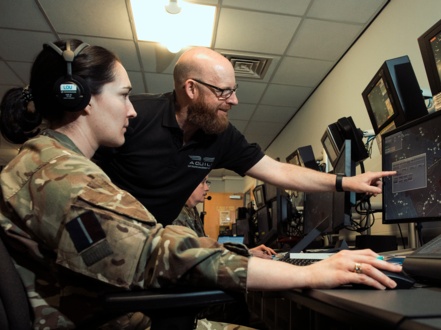_Original Image_m14653.jpg)
Two Quick Reaction Alert Typhoons from RAF Lossiemouth have temporarily relocated to RAF Leeming as part of a programme of exercises to ensure the Fighter Jets are always ready to respond at a moment’s notice.
The RAF maintains a pool of quick reaction alert Typhoons at readiness 24 hours a day, 365 days a year to respond to any potential threats. This is a significant part of the RAF’s primary role to defend the UK and UK interests overseas. The multi-role Typhoon squadrons are based at RAF Coningsby and RAF Lossiemouth.
_Original Image_m14648.jpg)
To maintain this continuous capability, it is important to maintain the ability to operate the aircraft from different locations. In the exercise scenario the squadron was given a short notice order to relocate and be prepared to rapidly commence operations from RAF Leeming.
_Original Image_m14659.jpg)
"RAF Lossiemouth personnel from a range of professions, in partnership with RAF Leeming, have worked tirelessly to ensure the QRA capability continues to maintain the security of the UK Airspace. This temporary relocation of Quick Reaction Alert to RAF Leeming showcases the RAF’s agility in delivering our capabilities. Being able to respond quickly and professionally in an exercise or operational scenario is at the centre of what we do as a force."
Wing Commander McAuley
Officer Commanding Operations Wing
The Exercise scenario required the Scotland-based squadron to liaise closely with the operations team at RAF Leeming to enact pre-written plans. A wide range of personnel from both stations came together to ensure the aircraft were relocated smoothly with all the required support and recommenced their state of alert. It was a whole Force effort involving movement of engineers, technicians, air and ground crew from Lossiemouth to Leeming.
_Original Image_m14666.jpg)
"The Royal Air Force stands ready to defend UK airspace at a moment’s notice – it’s what we do. Working closely with our Lossiemouth counterparts, I was incredibly impressed by the professionalism and efficiency with which our personnel ensured that RAF Leeming was ready to accommodate this vital capability rapidly and successfully."
Group Captain Prendergast
Station Commander, RAF Leeming
The UK airspace is continuously monitored by the RAF’s control and reporting centres who use a network of radars to produce a Recognised Air Picture. When necessary, Typhoon Fighters are scrambled, under the direction of RAF controllers from 19 Squadron, RAF Boulmer, supported by 78 Squadron, Swanwick to intercept, identify and, if required, intervene unidentified, uncooperative, or un-notified aircraft approaching our shores.
_Original Image_m14663.jpg)
The Typhoons are the most visible element of any quick reaction alert scramble, but they are only one element of a wider team that maintains the security of the UK’s airspace. The National Air and Space Operations Centre, works with the Police force’s Special Operations 15 and the Department for Transport.
UK Quick Reaction Alert operations are coordinated and practiced with NATO Allies within shared command and control structures. As part of the UK’s commitment to NATO, the RAF is currently providing a similar Quick Reaction Alert capability in Romania. This is a recurring 4-month deployment of Typhoon jets, known as operation Biloxi, which is part of a wider NATO enhanced Air Policing mission to maintain the security of NATO airspace.





